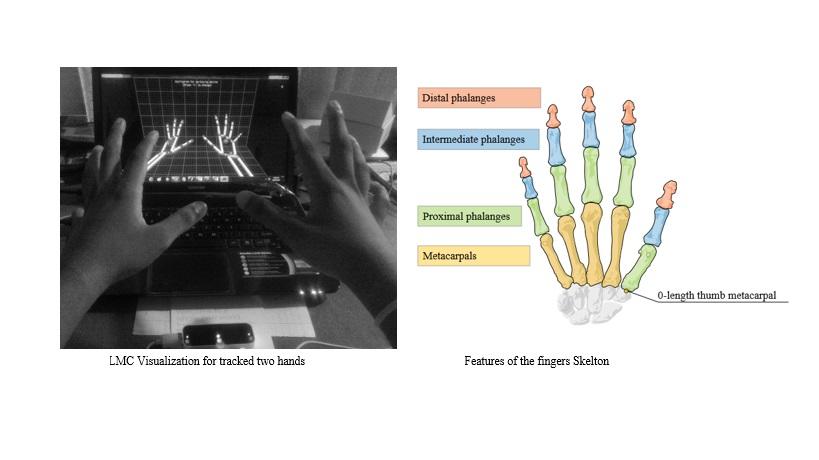Design

The design of the Hand gesture Controlled Soft Robot Manipulator is a bilateral system and the main design comes as master side design, slave side design and communication in between as shown in the above figure.
Mainly the master side is the Hand Gesture Controlling Mechanism and the slave side is the Robot Manipulator Mechanism with a Soft Gripper. So the designing was performed individually for the two systems and then finally both systems was integrated as one design.
Overall Design
Robot Manipulator & Fingers
Robot Manipulator
Five (5) Degrees of Freedom robot manipulator has been used for the development.
Finger (Elastromer based actuator)
This actuator consists of two main parts, the main body and the base. Eleven (11) chambers were connected in series for the main body. In this main body, the Chamber separation wall was thinner than the other walls in order to bend without expanding. The base was a rectangular plate. Solidworks CAD software was used to design the mold of the Gripping actuators and to export .stl files for 3D printing.
The figure shows the Robot Manipulator & the Elastromer based gripping actuators.
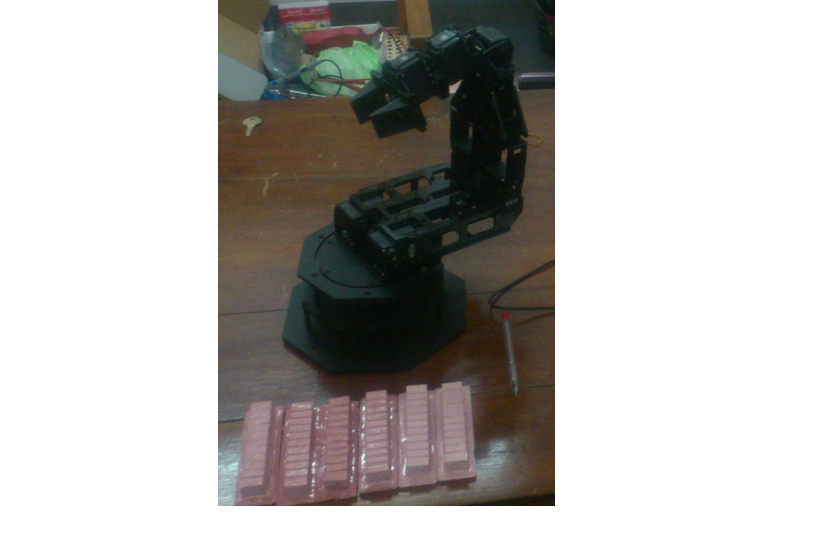
Control Board & Connection
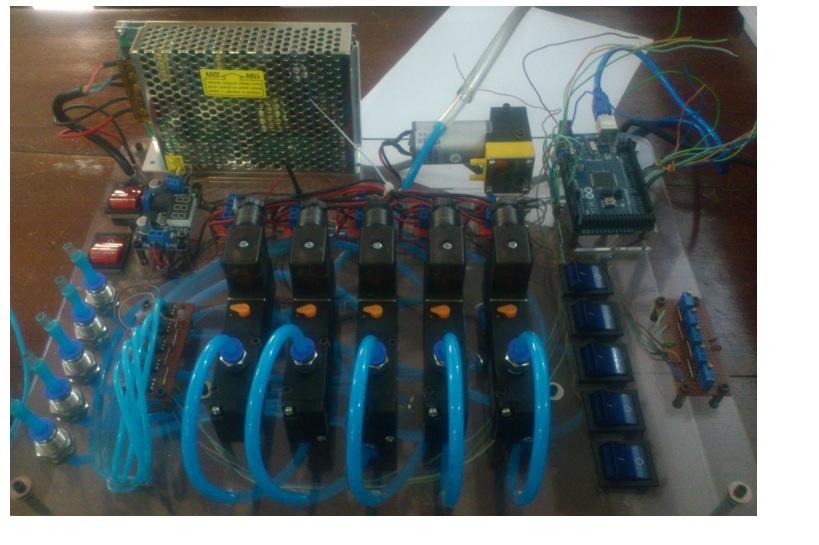
Control board for the Soft Gripping Fingers were made with the list of items mentioned in Table 01. A common 12V 5A regulated switching power supply module was used to power up the whole control board. 1/4'' Pneumatic 3 Way 2 Position spring return solenoid valve 12VDC were used to control air flow in to the actuator and in the same time miniaturized diaphragm pneumatic pump which provides 50psi of air pressure was used to generate air supply continuously. Arduino Mega is connected to interface the control board with Processing IDE which connects the Leap Motion Controller and other control algorithm. Buck converter which converts 12VDC into 5VDC with MOSFET driver modules were used to control solenoid valves using 5VDC output of Arduino mega. Sphygmomanometer pressure sensor with differential amplifier circuit, to read input air pressure to Arduino mega and also a Flex sensor, to detect the bending of the actuator, were used.
Table 01 shows the list of items need to develop 5 solenoid control board.
Table 01: List of items for the Control Board
| Item with description |
| |
1 | 1/4'' Pneumatic 3 Way 2 Position single Solenoid valve 12VDC | 5 | |
2 | 1/4'' NPT male to Tube OD 6mm Straight Connector Push In Fitting | 10 | |
3 | Tube OD 6mm Union cross Push In Fitting | 1 | |
4 | Tube OD 6mm Union Y Push In Fitting | 7 | |
5 | Tube OD 6mm Pneumatic Bulkhead Union Push In Fitting | 5 | |
6 | OD 6mm Pneumatic Tube | 6m | |
7 | Miniature Diaphragm Pneumatic Pump | 1 | |
8 | MOSFET Driver Module | 5 | |
9 | Buck Boost Converter | 1 | |
10 | Sphygmomanometer Pressure Sensor | 5 | |
11 | Rocker toggle switch x 8 (Red 2, blue 5) | 7 | |
12 | Potentiometer | 5 | |
13 | 12V 5A Regulated Switching Power Supply | 1 | |
14 | Arduino Mega | 1 | |
15 | Flex sensor | 1 | |
16 | Cast Acrylic sheet | - | |
17 | Heat-Shrinkable tubing ,Jumper wires, lugs, Cable ties, Hot Glue, Screws, nuts, etc | - |
Hand Gesture Controlling
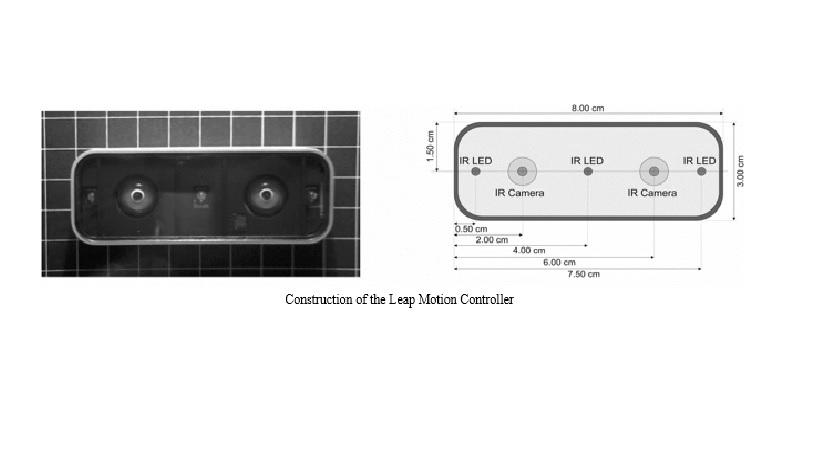
Hand gesture controller design was based on stereo vision technology. Stereo vision, is meant to be the extraction of 3D information from the digital images. It is an artificial stereopsis which is followed by two cameras to obtain depth and 3D structural information.
Literature survey reveals 3D data acquisition, vastly increases with the potential industrial applications within the last few years. Accuracy and the robustness of 3D sensors were increased while the product itself, became inexpensive. Mainly 3D sensors were used for object tracking, motion analysis, 3D scene reconstruction and gesture based user interfaces in literature.
The main reasons for choosing Leap Motion Controller as the 3D sensor for hand gesture detection are as follows.
• Low Cost. (With respect to other available 3D sensor modules this one is very cheap).
• The range of the sensor (1m) fits for the application.
• The sensor module is specially designed for the hand gesture tracking.
• Free SDK (Software Development Kit) and Libraries are available.
• Availability of the free support. (Blogs, forums and free testing software and applications).
• MATLAB compatibility. (Mat-leap integration between MATLAB and Leap is possible).
• Application novelty for manipulator robot integration.
• Accuracy fits for the application.
• Lightweight, portability and plug and play device.
The design orientation of both hardware and software of the Leap Motion, is concentrated to the hand gesture application development. Also the above mentioned features are readily available with the system and are causes for the selection of this device.
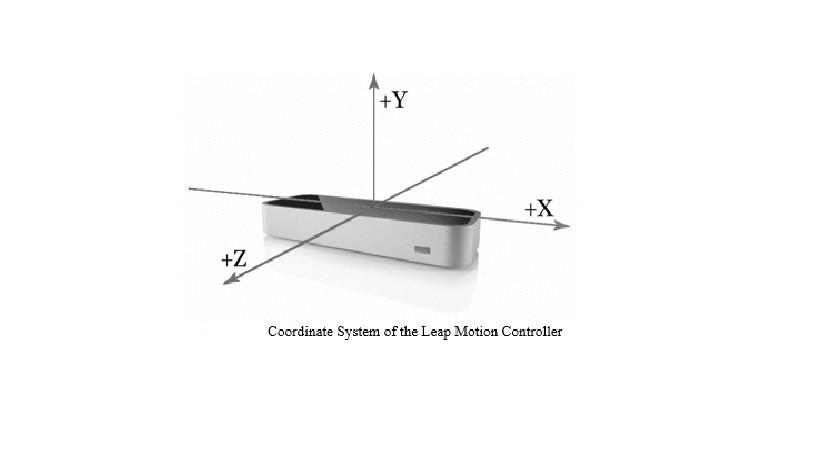
Leap Motion Controller is a conjunction with its API (Application Programming Interface) drive positions in Cartesian space with predefined objects like finger tips, pen tips etc. This is designed as a USB (Universal Serial Bus) peripheral device. Two monochromatic IR cameras and three infrared LEDs (Light Emitting Diodes) are assembled as shown in Figure. The LEDs generate a 3D pattern of dots of IR light and cameras are assembled in such a fashion to generate 300 frames per second of reflected data. Then the data will be sent to the V2 Tracking software and 2D frames generated by two cameras will be further analyzed to generate 3D positioning data.
As shown in the above figure Leap Motion Controller consists of a right-handed Cartesian coordinate system. The origin lies on the top of the Leap Motion Controller. X and Z axes lies in the horizontal plane and Y axis is vertical. Following Table shows the measurement details of the Leap Motion Controller. The measurements can vary according to the external conditions.
Measurements of Leap Motion Controller
Parameter | Measurement |
Distance | Millimeters |
Time | Microseconds |
Speed | Millimeters/second |
Angle | Radians |
Bellow Figure shows the Leap Motion Controller visualization and the generated skeleton for two hands. Also it shows the bones of the fingers that could be tracked and Metacarpal – the bone inside the hand connecting the finger to the wrist (except the thumb), Proximal Phalanx – the bone at the base of the finger, connected to the palm, Intermediate Phalanx – the middle bone of the finger, between the tip and the base and Distal Phalanx – the terminal bone at the end of the finger can be identified and tracked. Apart from the tip detection, this sensor can be programmed to detect the gestures, motions and tools.
